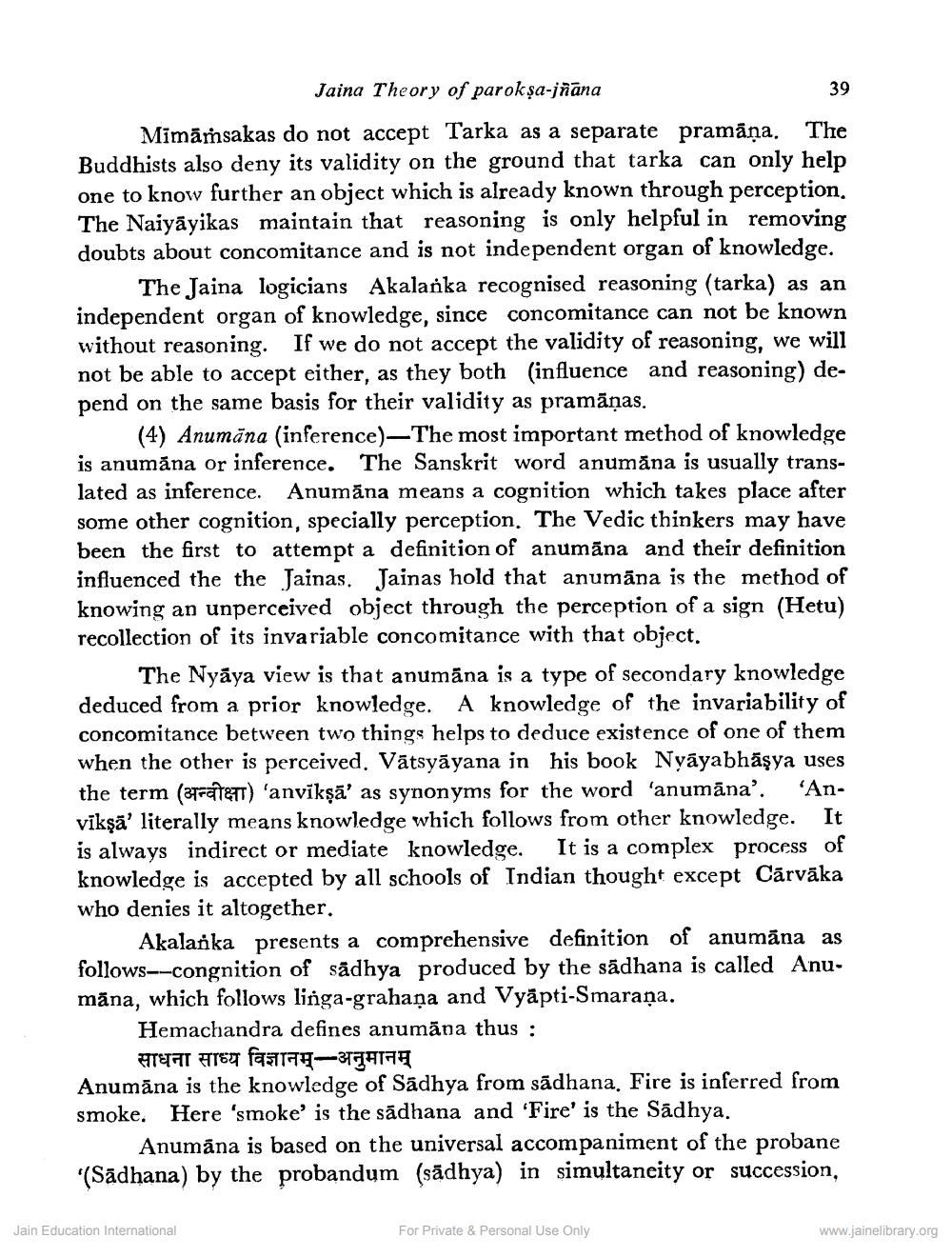Book Title: Jaina Theory of Paroksha Jnana Author(s): Goura Hajra Publisher: USA Federation of JAINA View full book textPage 4
________________ Jaina Theory of parokșa-jñāna 39 Mimāṁsakas do not accept Tarka as a separate pramāņa. The Buddhists also deny its validity on the ground that tarka can only help one to know further an object which is already known through perception. The Naiyāyikas maintain that reasoning is only helpful in removing doubts about concomitance and is not independent organ of knowledge. The Jaina logicians Akalanka recognised reasoning (tarka) as an independent organ of knowledge, since concomitance can not be known without reasoning. If we do not accept the validity of reasoning, we will not be able to accept either, as they both (influence and reasoning) depend on the same basis for their validity as pramāņas. (4) Anumāna (inference)—The most important method of knowledge is anumăna or inference. The Sanskrit word anumăna is usually translated as inference. Anumāna means a cognition which takes place after some other cognition, specially perception. The Vedic thinkers may have been the first to attempt a definition of anumāna and their definition influenced the the Jainas. Jainas hold that anumāna is the method of knowing an unperceived object through the perception of a sign (Hetu) recollection of its invariable concomitance with that object. The Nyāya view is that anumāna is a type of secondary knowledge deduced from a prior knowledge. A knowledge of the invariability of concomitance between two things helps to deduce existence of one of them when the other is perceived. Vātsyāyana in his book Nyayabhāşya uses the term (Trata) 'anviksā' as synonyms for the word 'anumāna'. 'Anvīkşā' literally means knowledge which follows from other knowledge. It is always indirect or mediate knowledge. It is a complex process of knowledge is accepted by all schools of Indian thought except Cārvāka who denies it altogether. Akalanka presents a comprehensive definition of anumāna as follows---congnition of sädhya produced by the sādhana is called Anumāna, which follows linga-grahaņa and Vyäpti-Smaraña. Hemachandra defines anumāna thus : साधना साध्य विज्ञानम्-अनुमानम् Anumāna is the knowledge of Sadhya from sādhana. Fire is inferred from smoke. Here 'smoke' is the sādhana and 'Fire' is the Sadhya. Anumāna is based on the universal accompaniment of the probane (Sādhana) by the probandum (sādhya) in simultaneity or succession, Jain Education International For Private & Personal Use Only www.jainelibrary.orgPage Navigation
1 2 3 4 5 6 7
